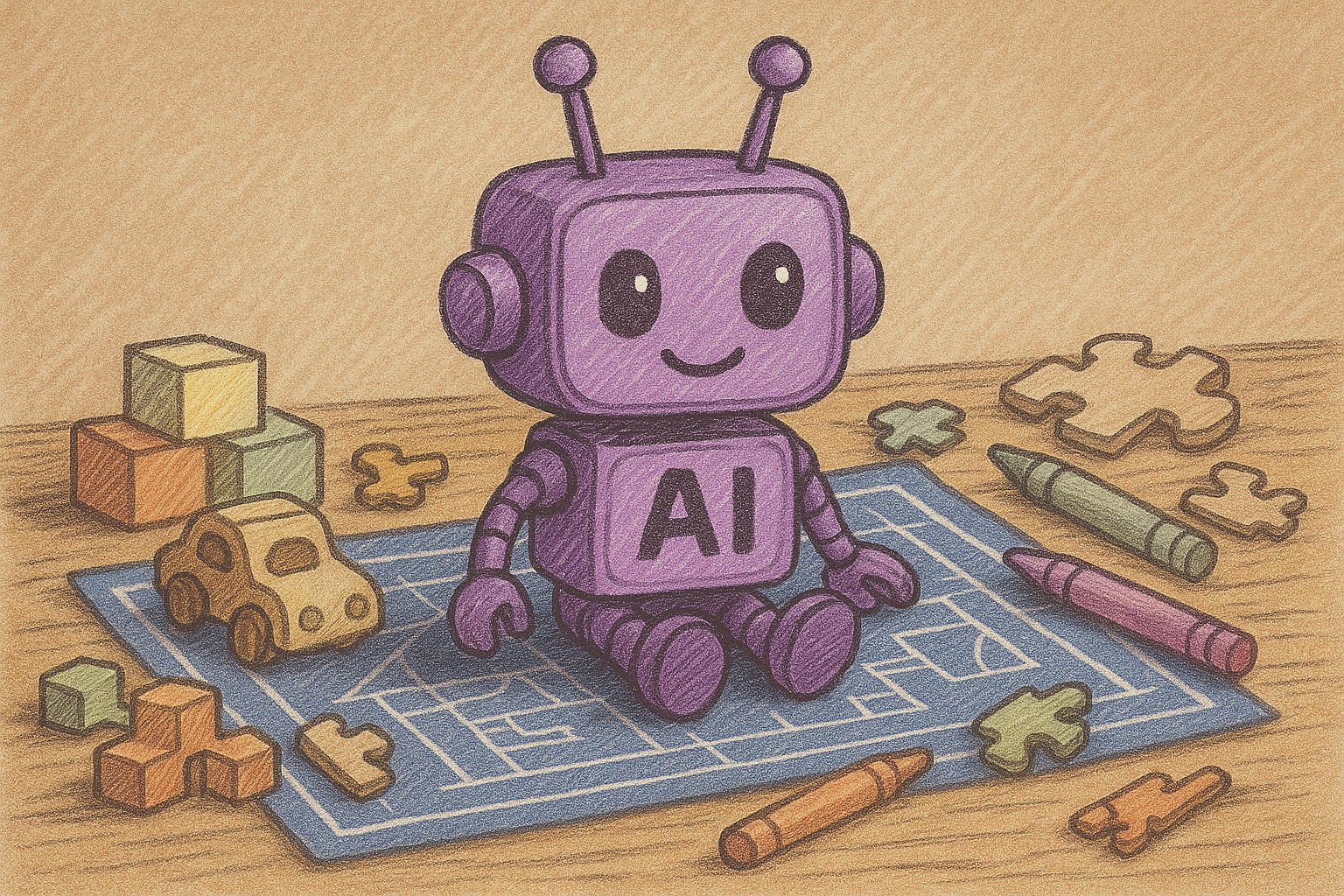When I saw Hugging Face unveil Reachy Mini, my first thought wasn’t about what it could do today, rather about what my kids might build with it. This tiny robot could one day be their first hands-on experience with AI, coding, and creativity all in one.

Not just because it looks adorable and expressive (it does). Not just because it starts at a much more accessible $299 (nice). Not even because it’s programmable in Python and fully open source (bingo).
Reachy Mini is small enough to sit on a desk but packed with enough sensors and motors to be interactive and full of personality. It moves. It listens. It responds. It’s open source (did I mention that?). And it connects directly to Hugging Face’s library of cutting-edge AI models.
Plenty of Time to Build the Future Together
My kids, for now, are more magnatile castles level builders. But when I look at Reachy Mini, I see the kind of playful, expressive, open-ended tech I want them to grow up with. The kind that sparks curiosity and invites them to create, not just consume.
They’re years away from writing their first line of code, and that’s exactly the point for me, Reachy Mini has plenty of time. Time for the hardware to get more capable, for the tools to get friendlier, and for communities to grow around platforms like this. If Reachy Mini is just the new beginning, then by the time my kids are ready, the ecosystem might be rich with resources, examples, and projects that make creative robotics feel as natural as building with blocks.
I want their first memories of AI and tech to be rooted in play, expression, and creativity. Who knows what they’ll be into, but I love the idea that they might grow up exploring, not just using these technologies.
This Time Feels Different
Reachy Mini might not be the first attempt at bringing social robotics to the masses. But it might be the first to stick.
The last generation of expressive home robots, Jibo, Kuri, Cozmo, to name a few, were charming but closed systems. You could use what they shipped with, but you couldn’t build on them. And when the companies behind them shut down, those robots disappeared along with the communities that could’ve kept them alive.
Here's hoping this time doent just feels different, but is different. Reachy Mini comes in kit form. It’s hackable. It’s open source (again have I mentioned that?), from hardware to behaviors. And it’s backed by a 10-million-strong developer community already remixing and extending Hugging Face models. You can code new behaviors, deploy vision models, teach it tricks, or just explore human-robot interaction right at your desk.
So will it be the robot everyone has on their desk in five years? Honestly, probably not.
But could it still be around, evolved and improved, when my kids are lining up to build their own projects?
Fingers crossed. 🤞